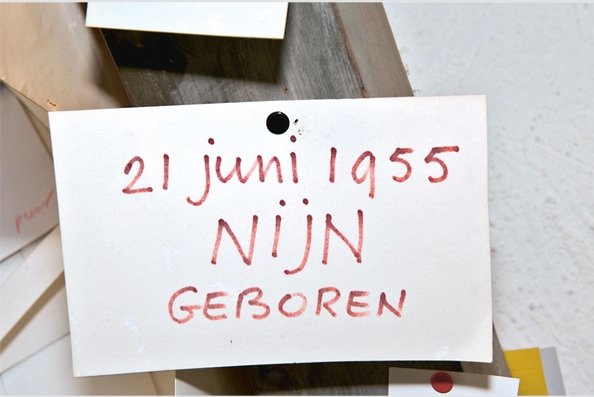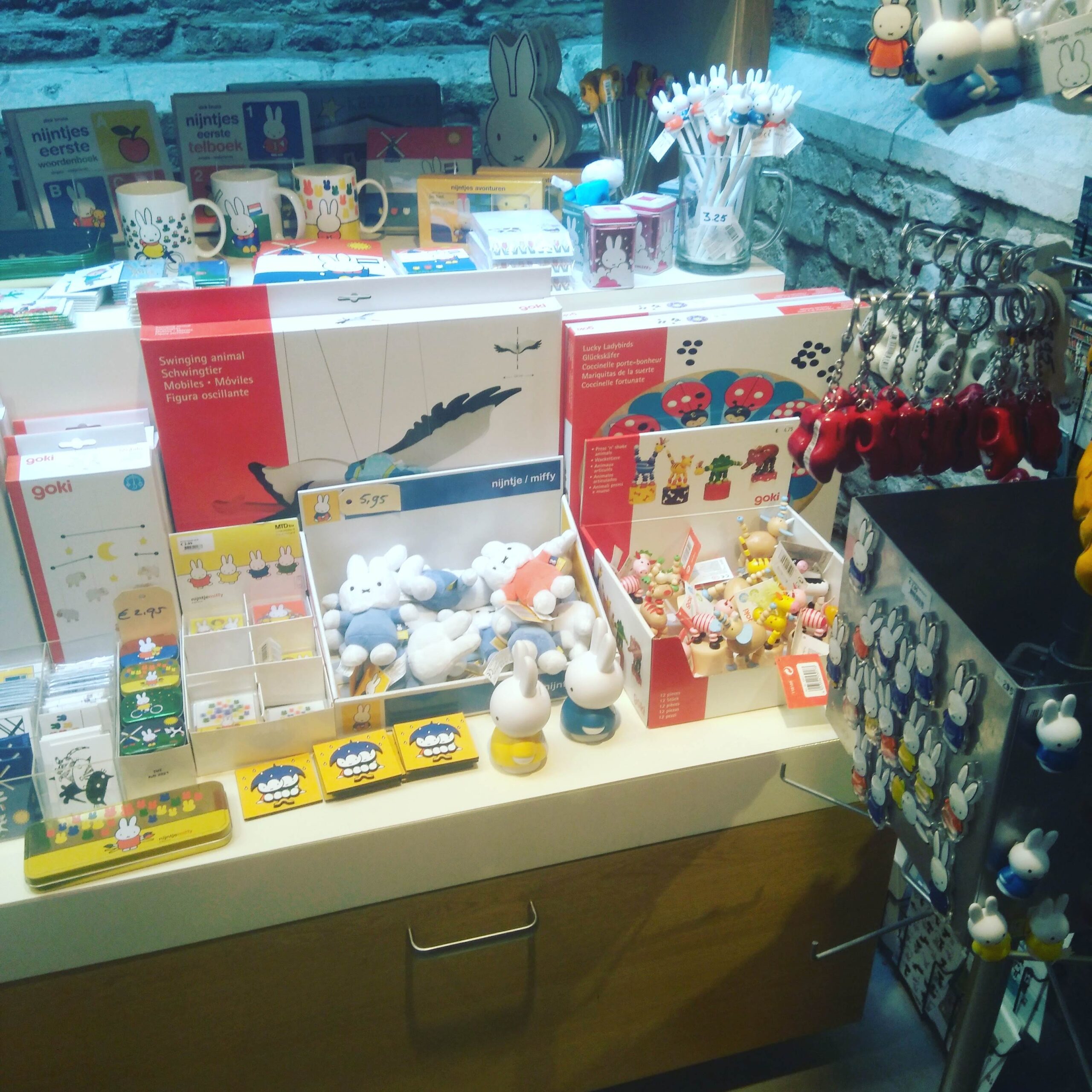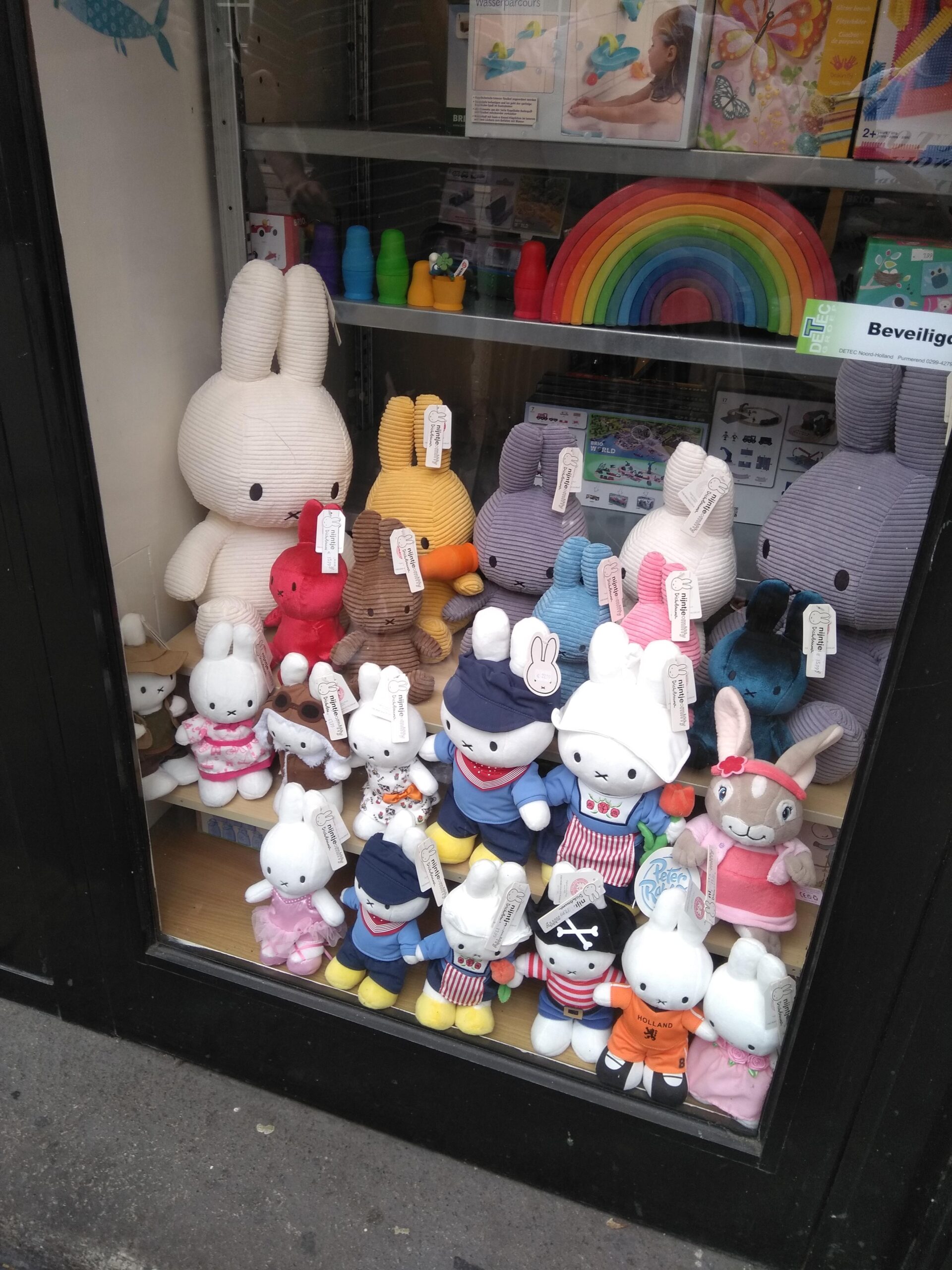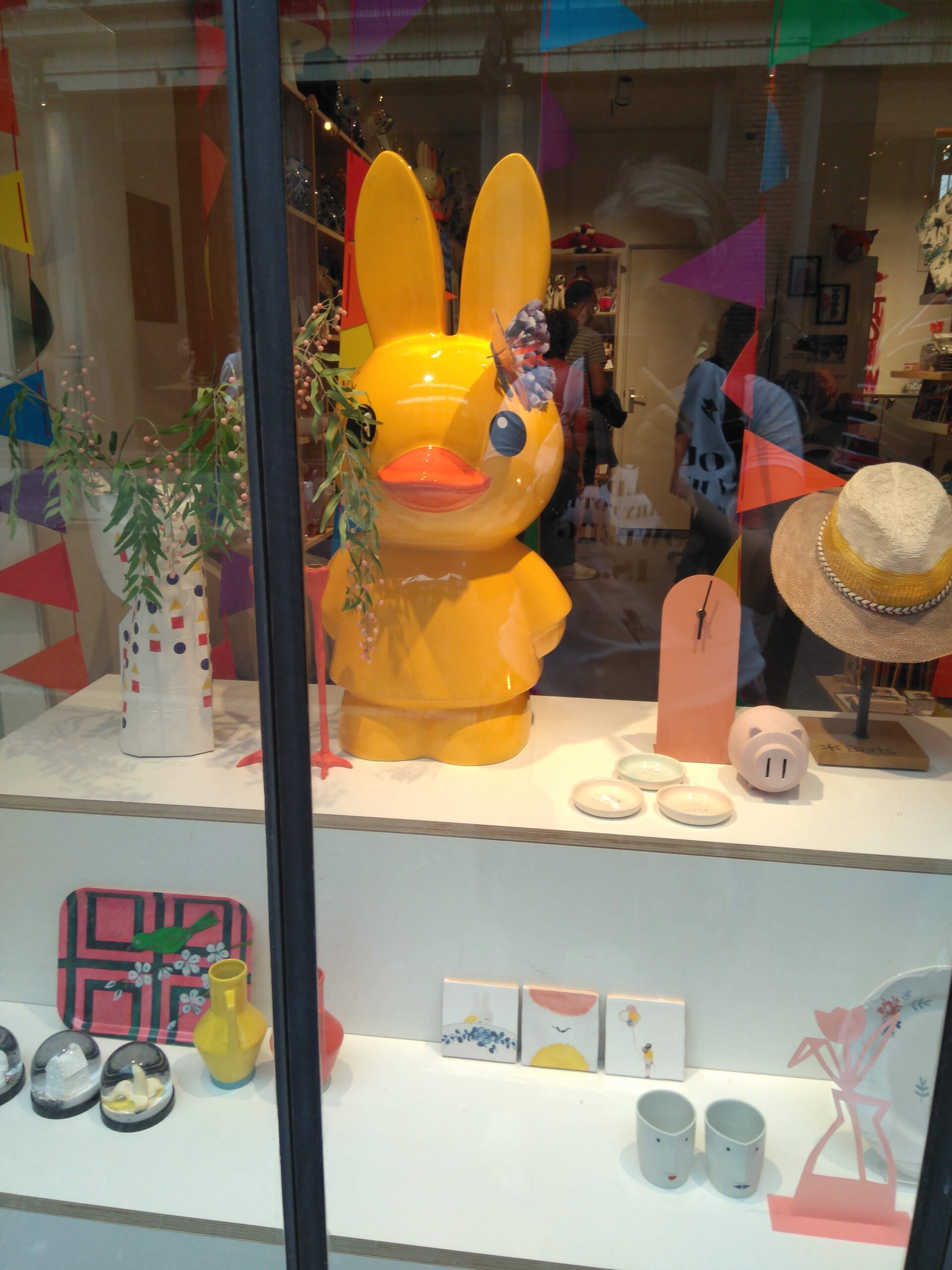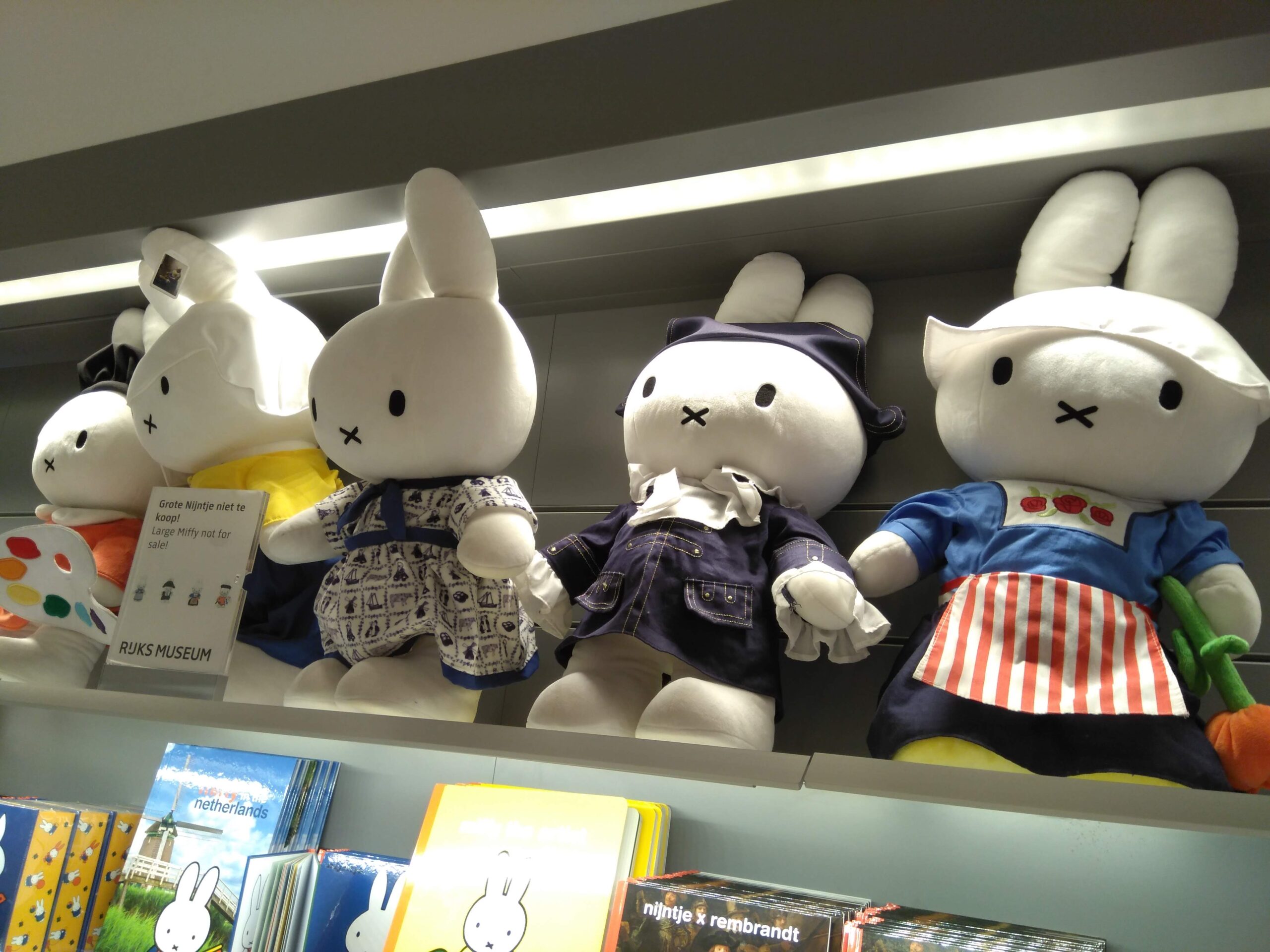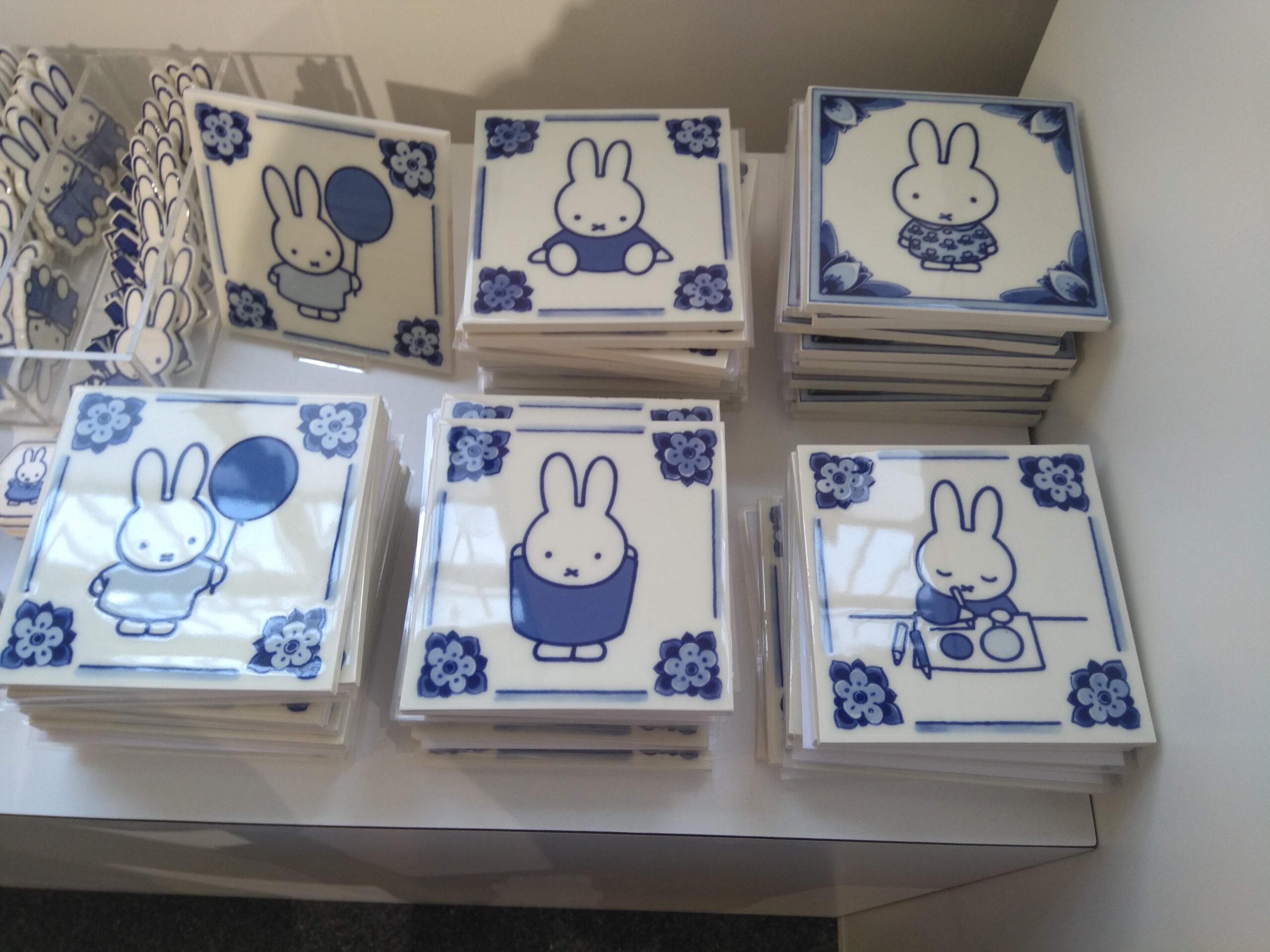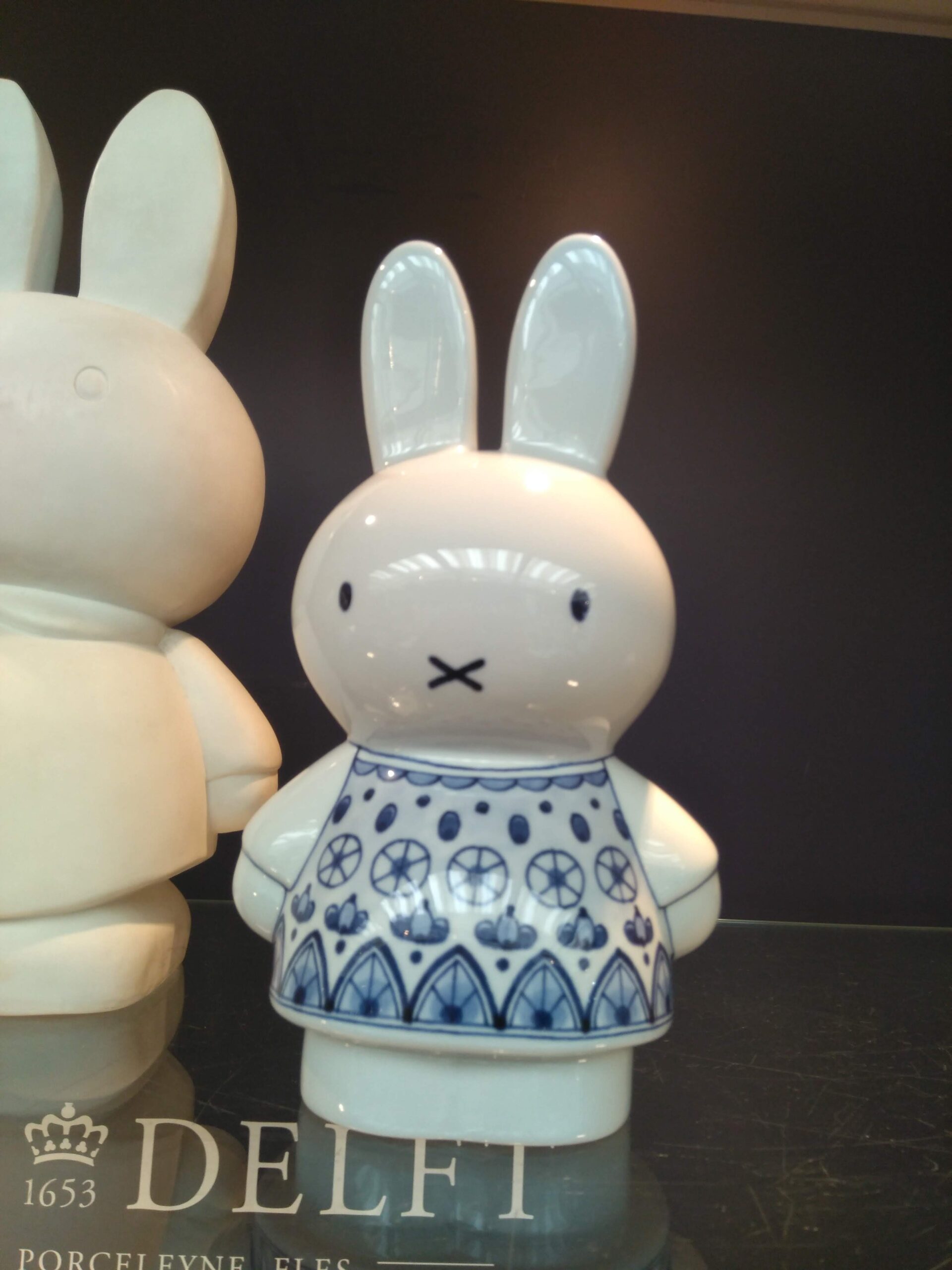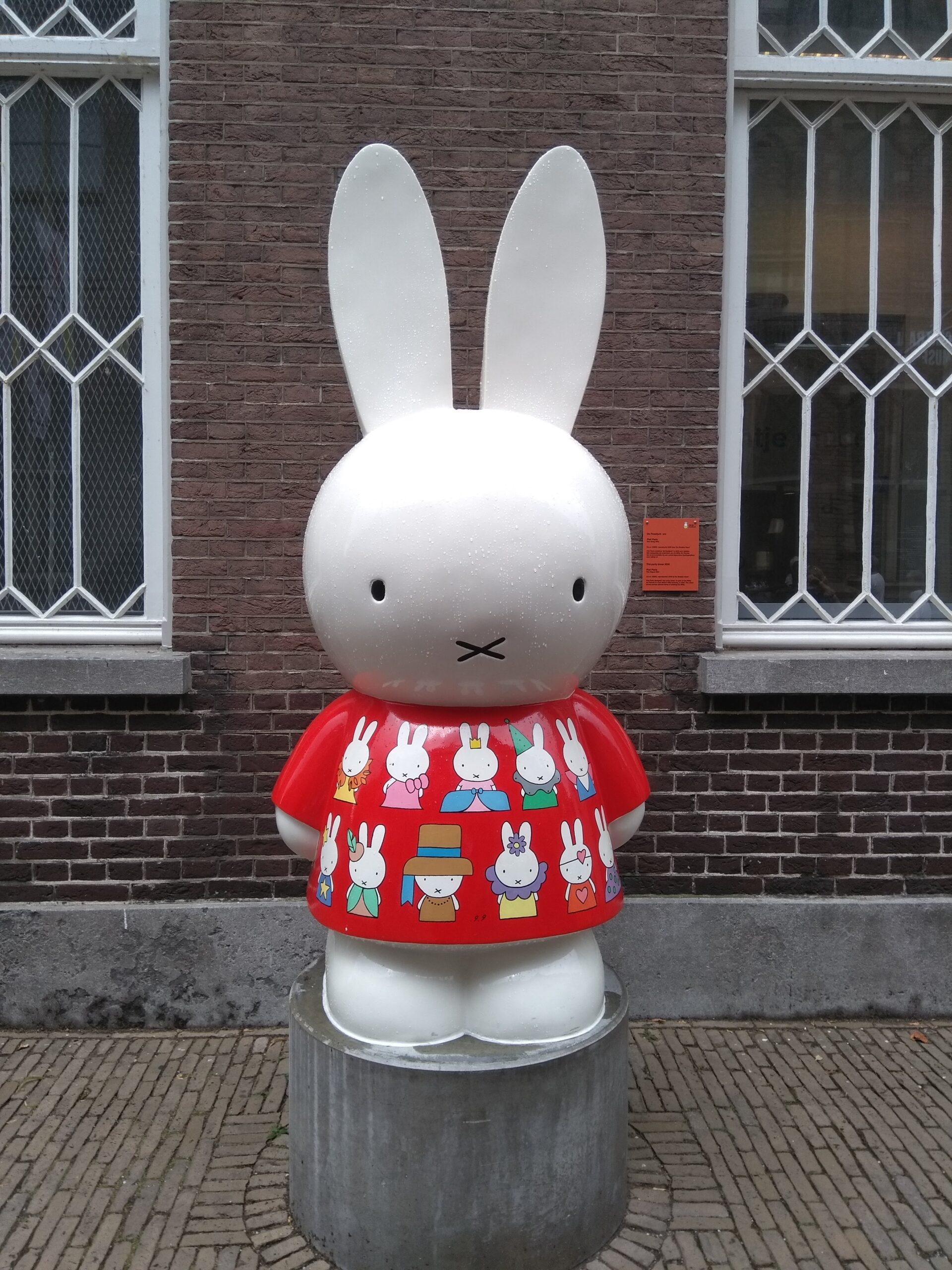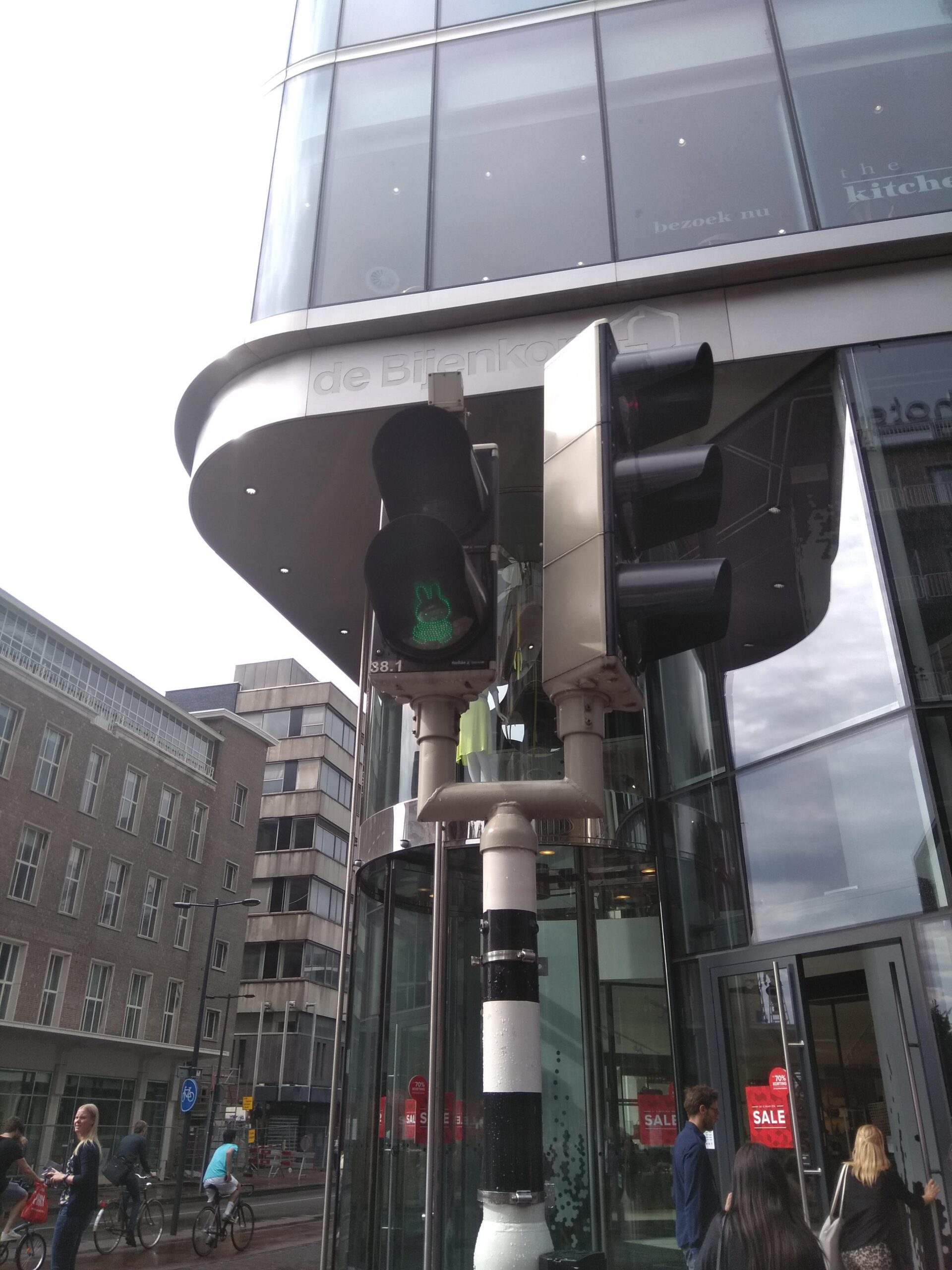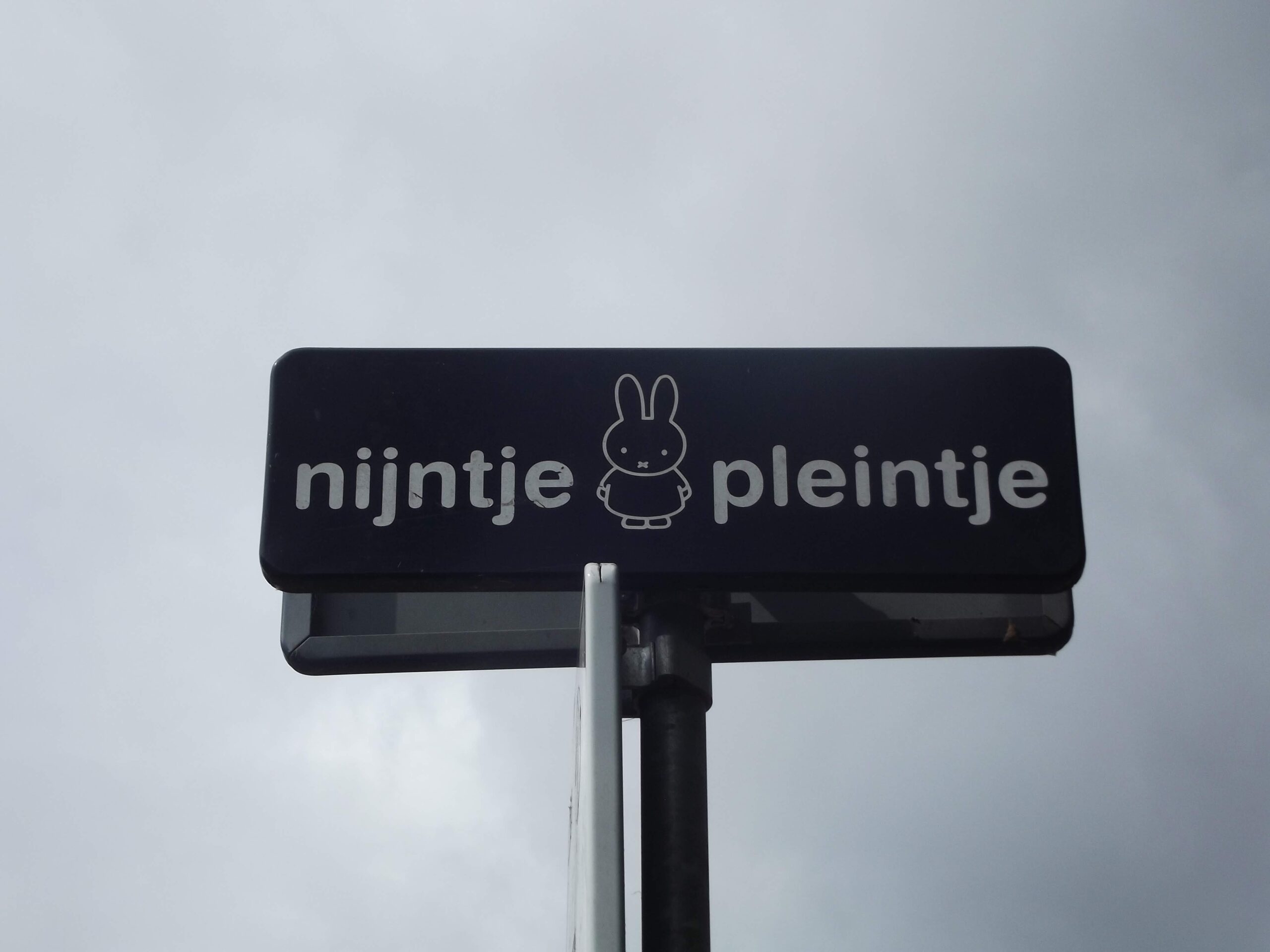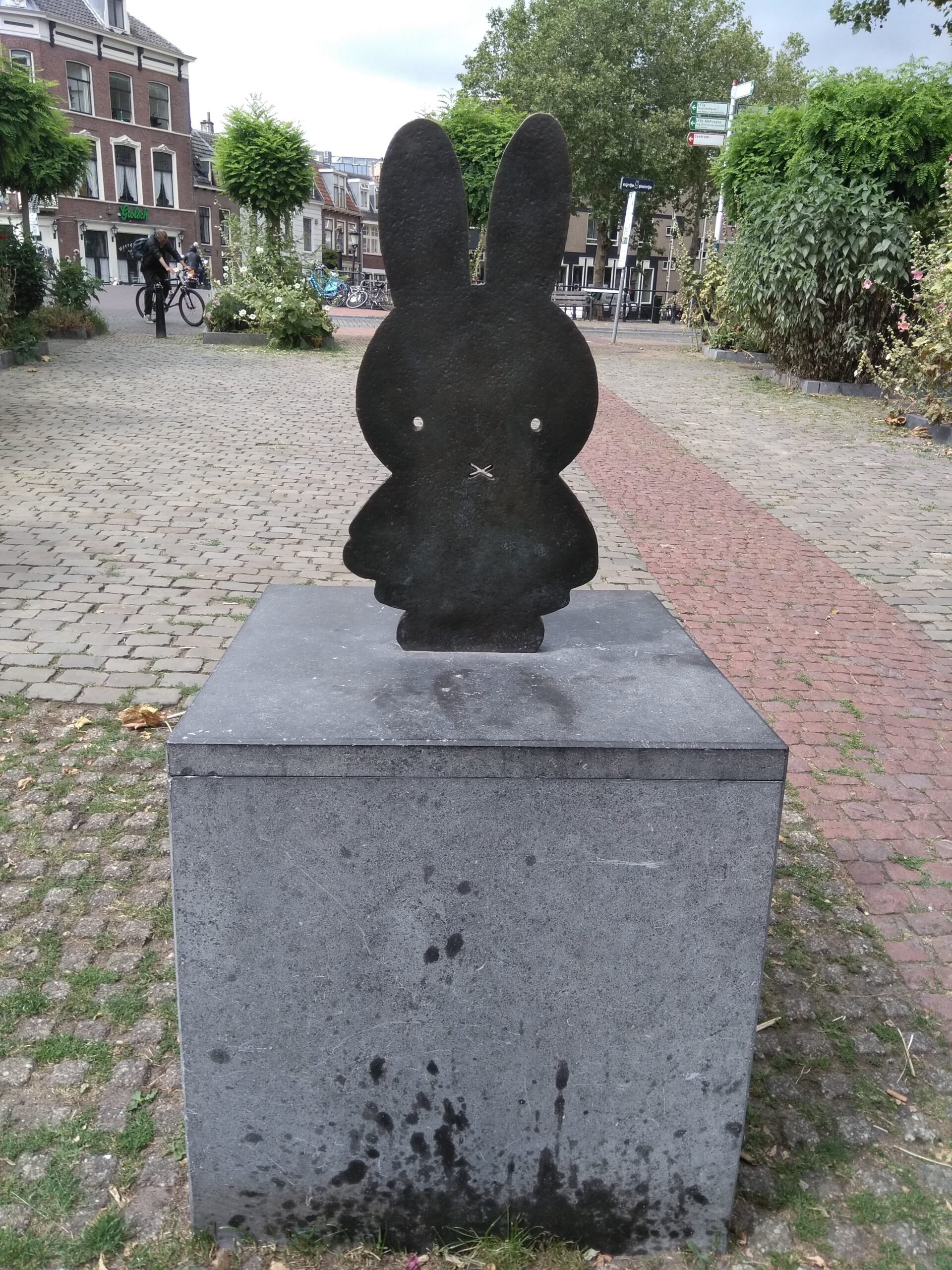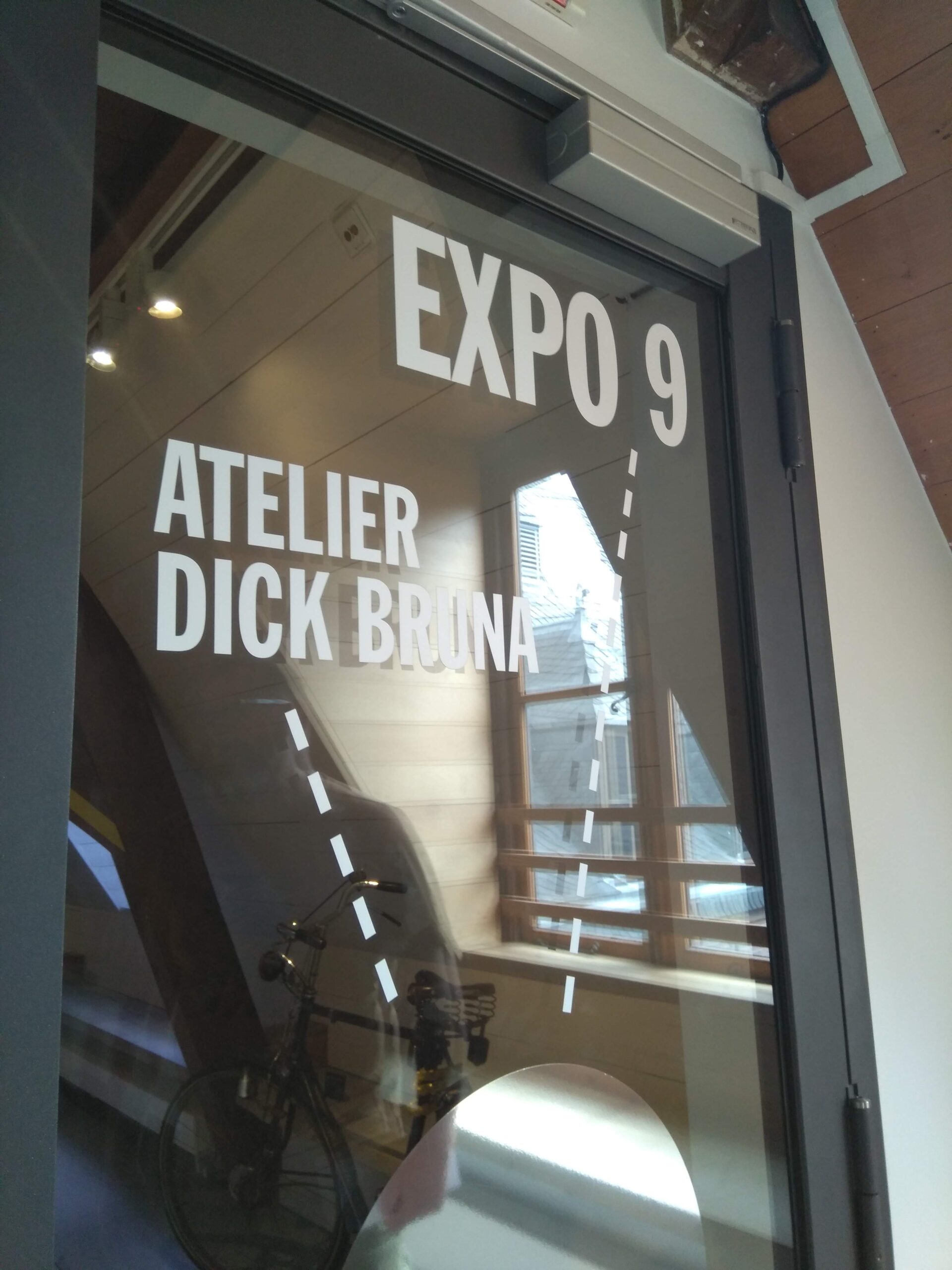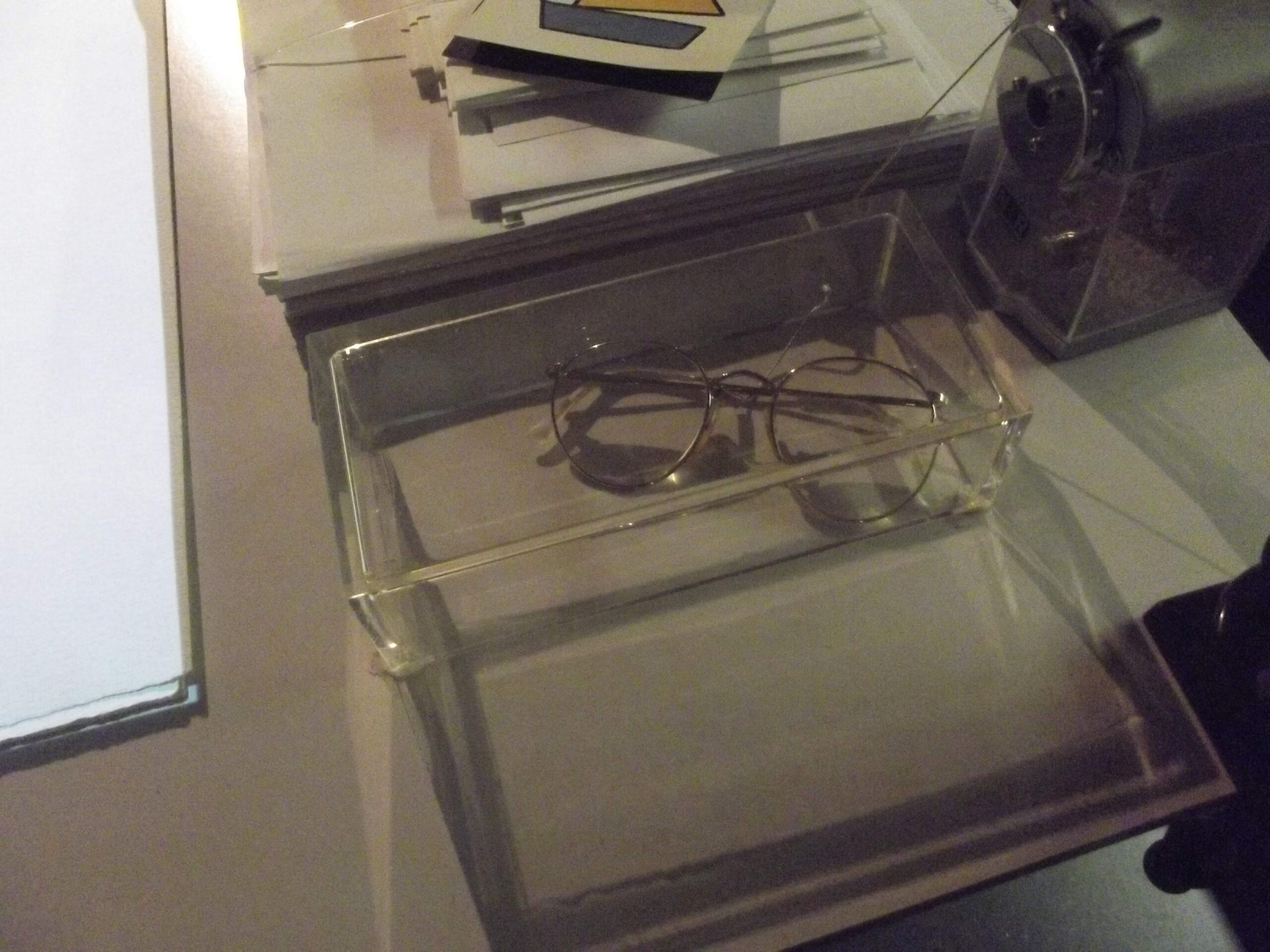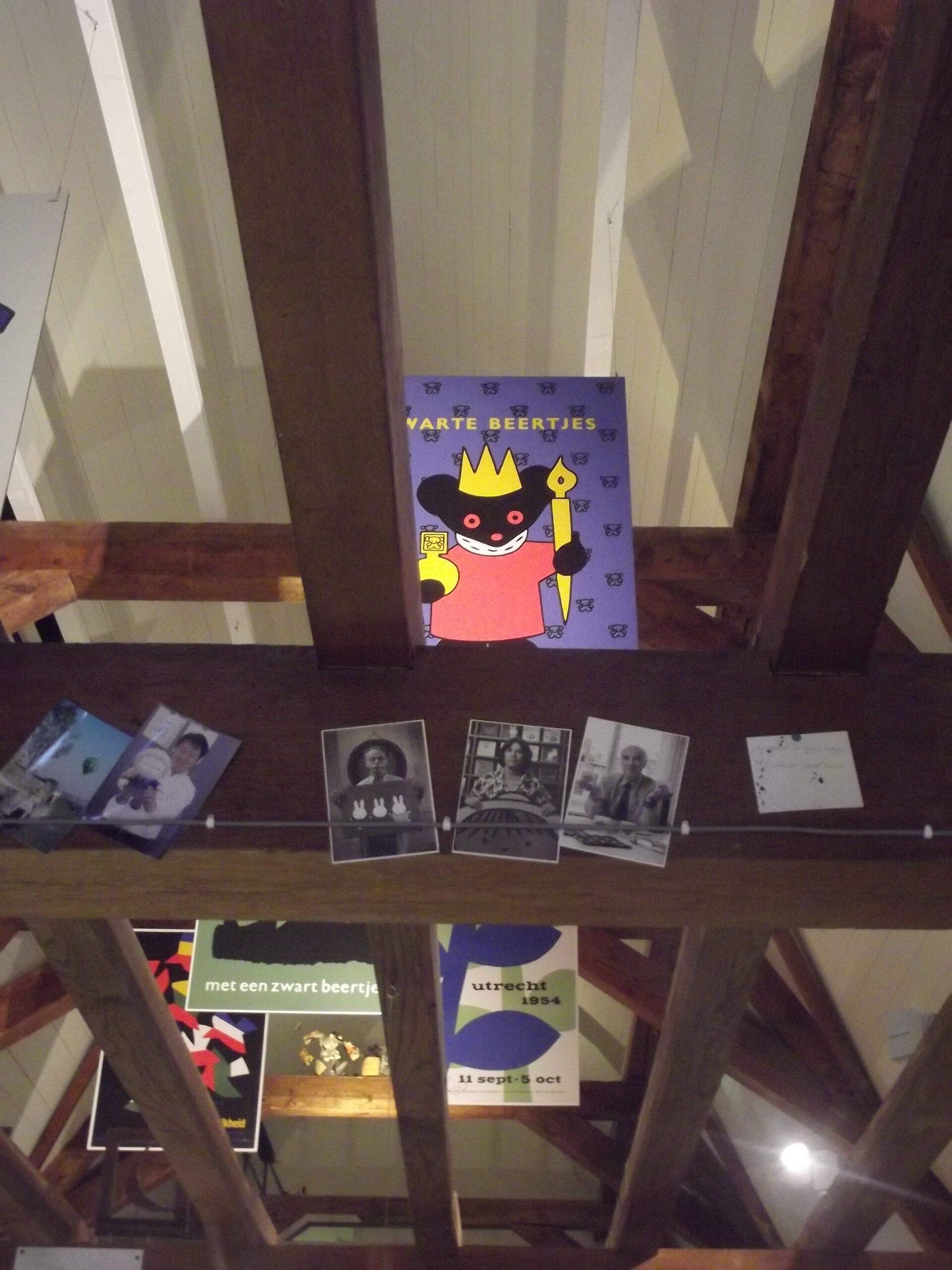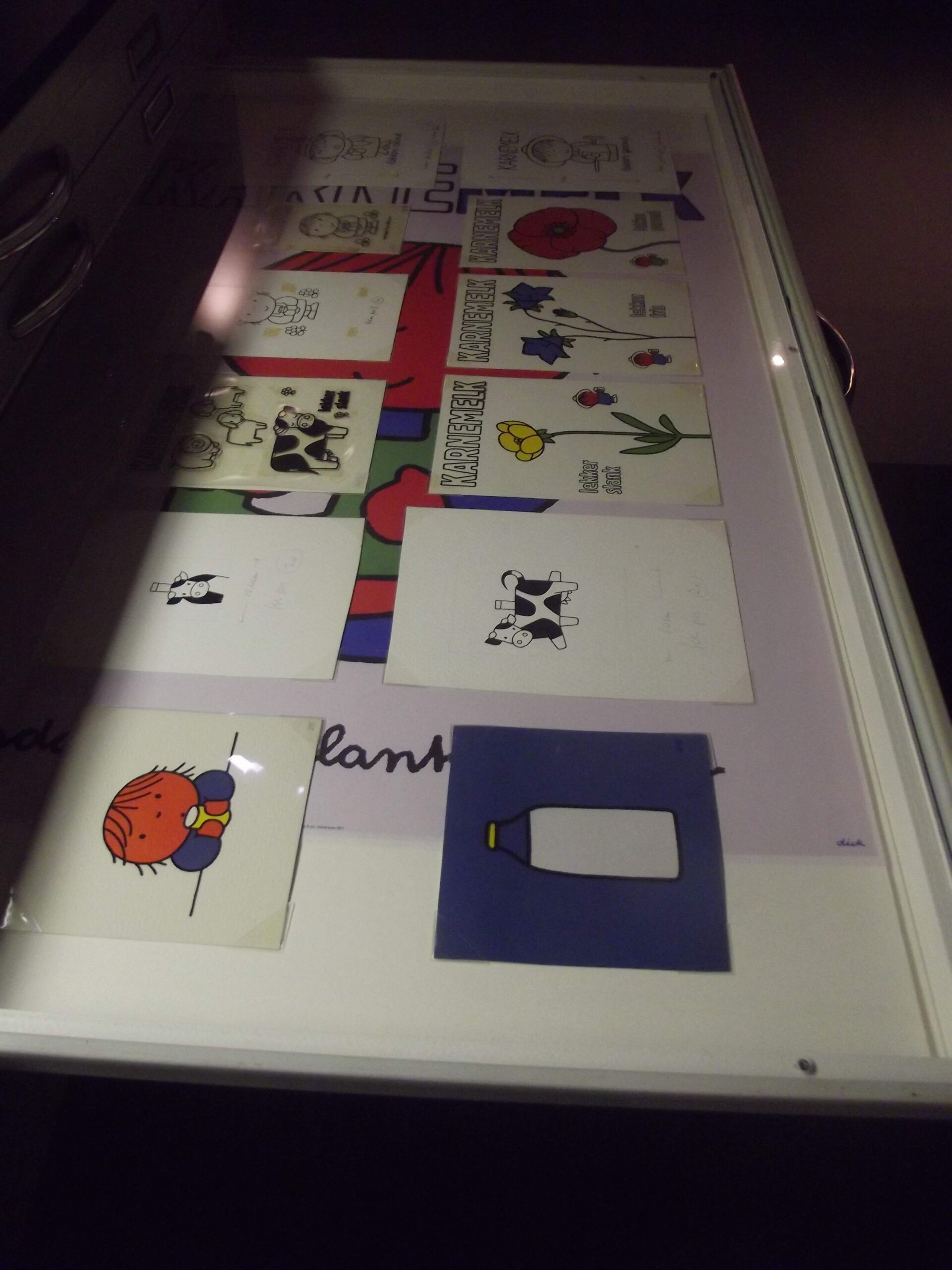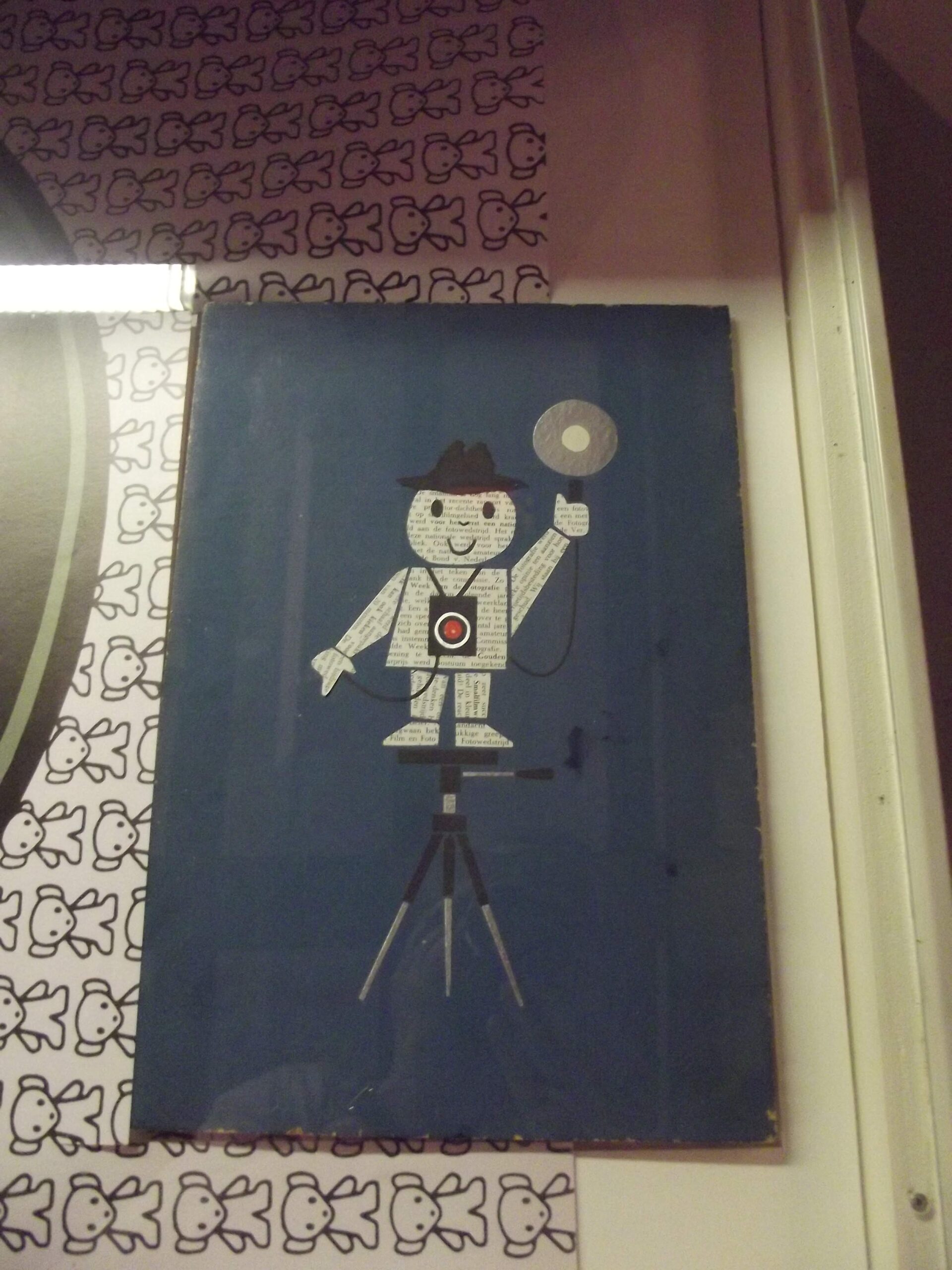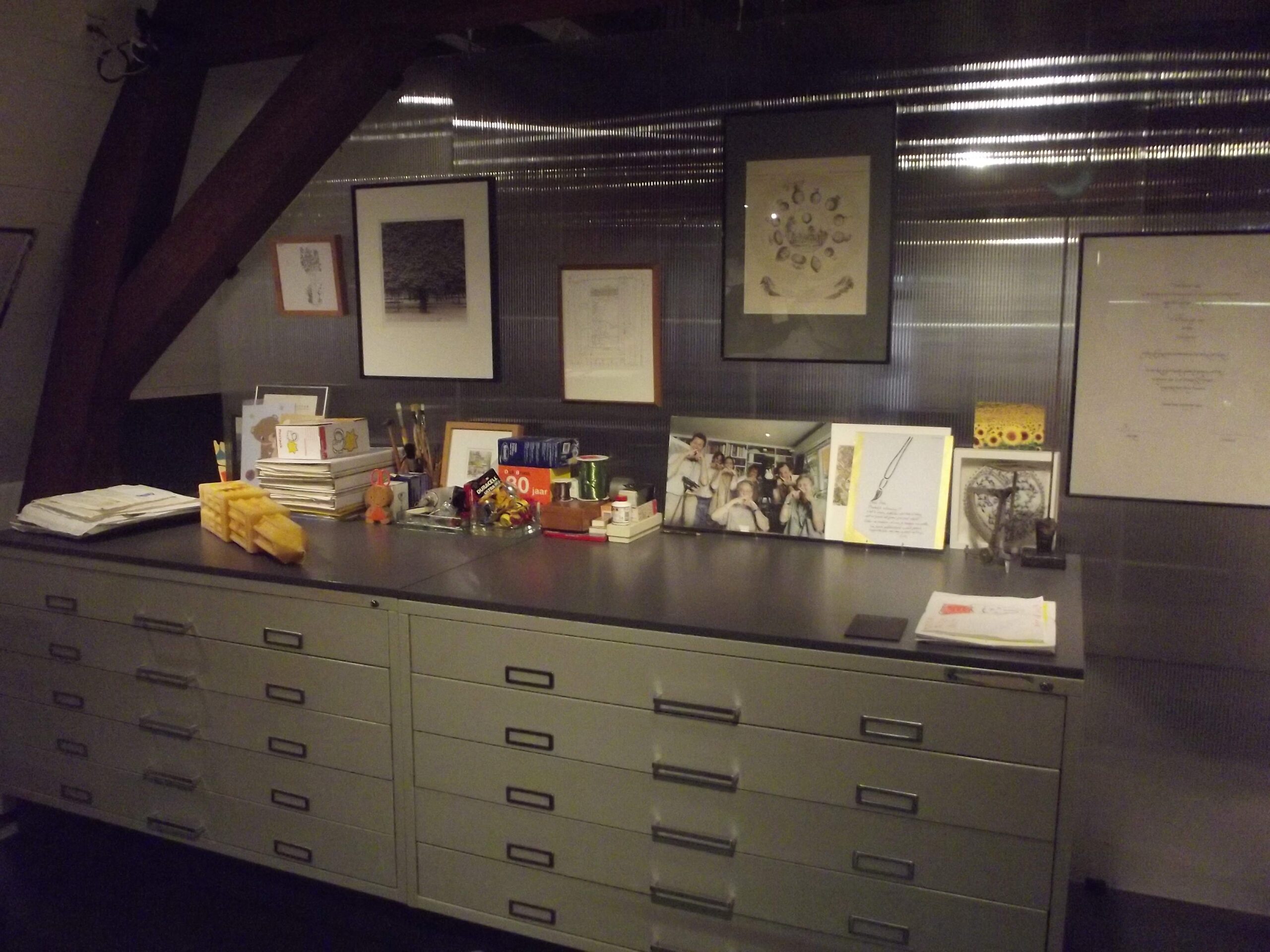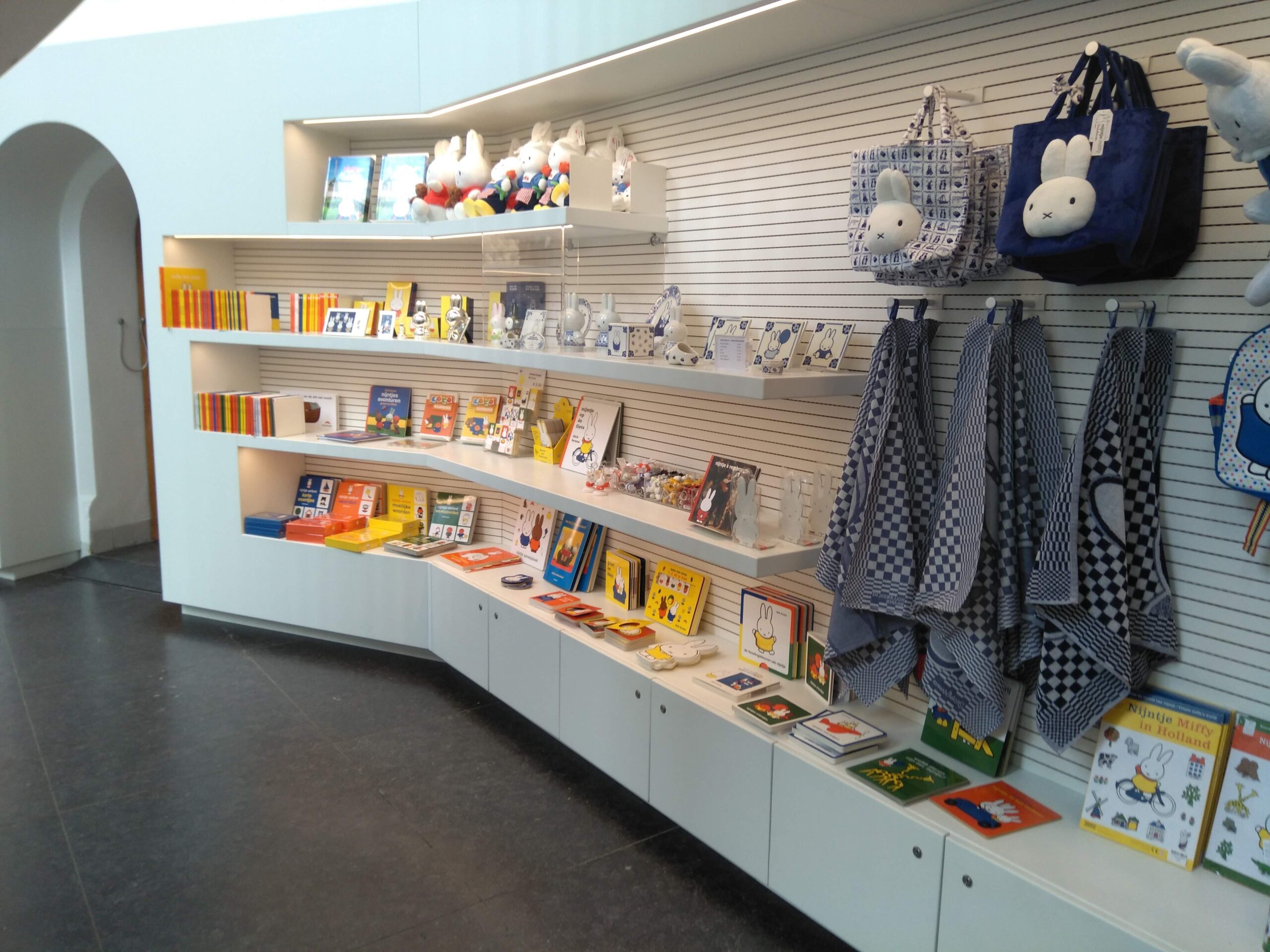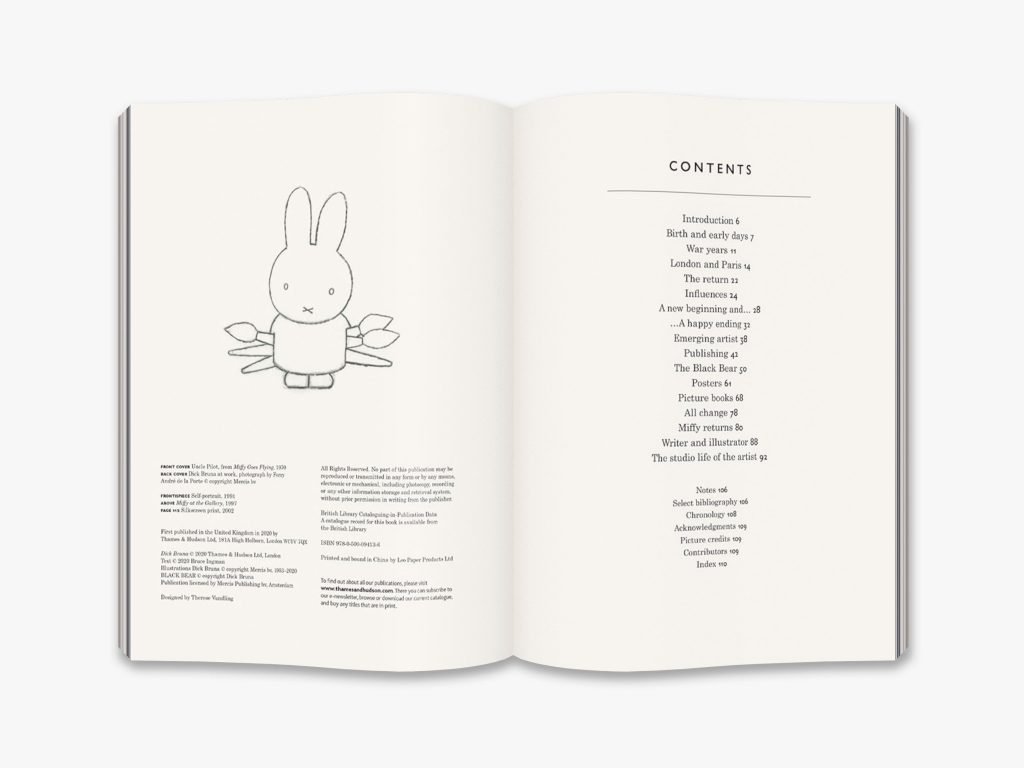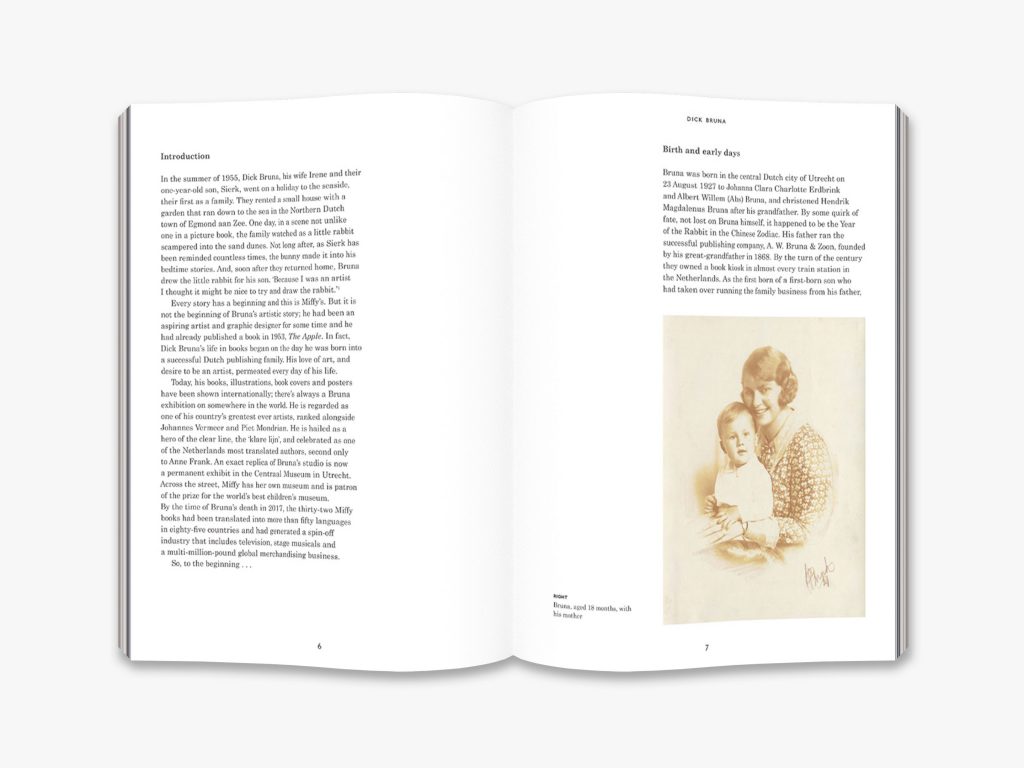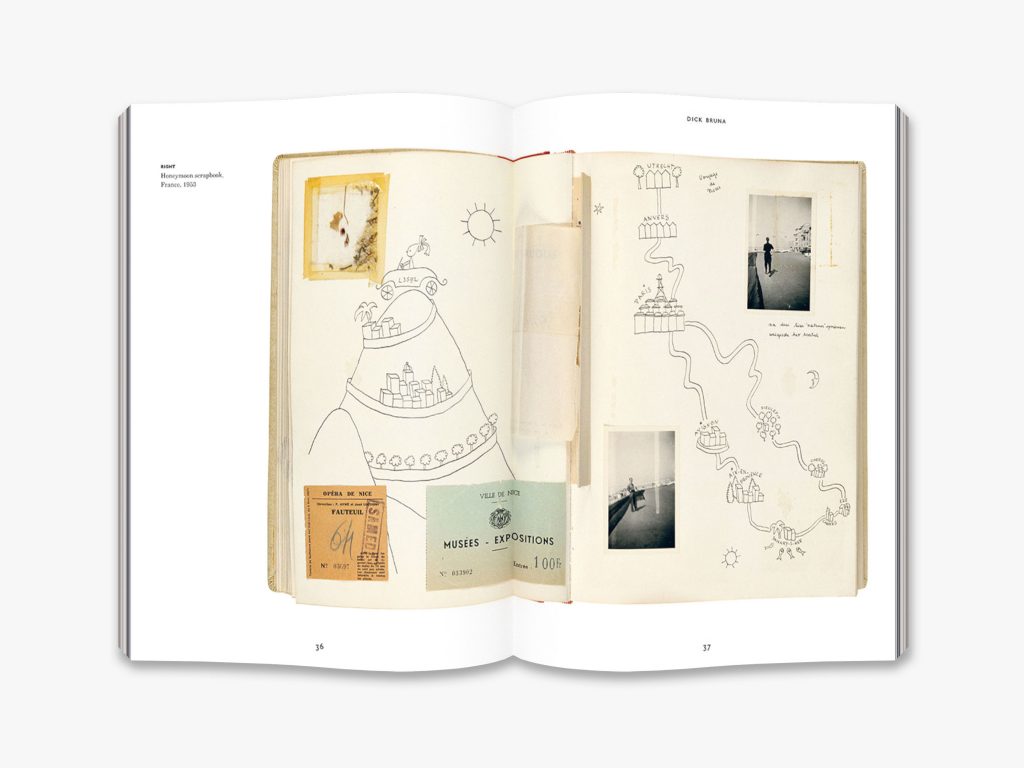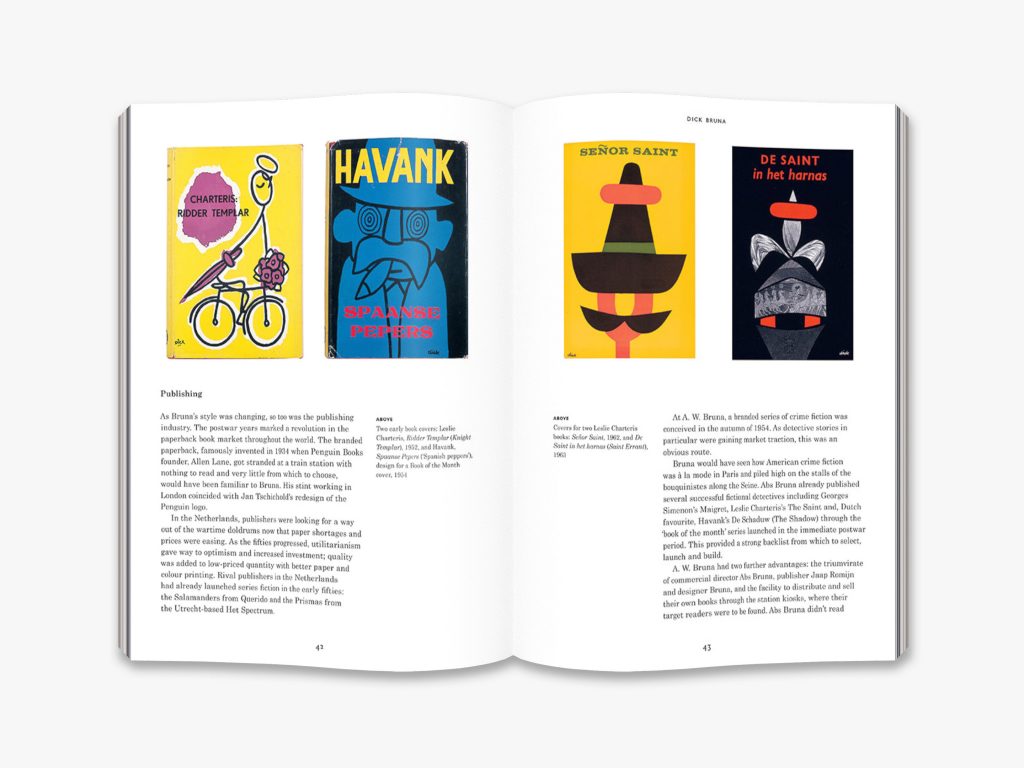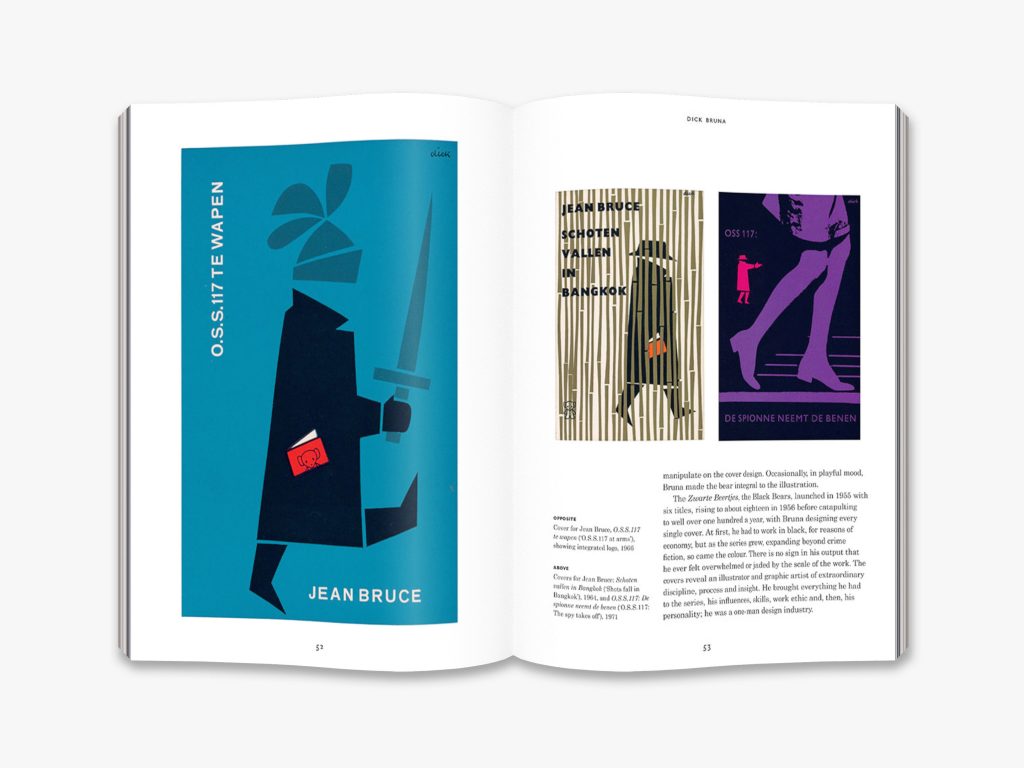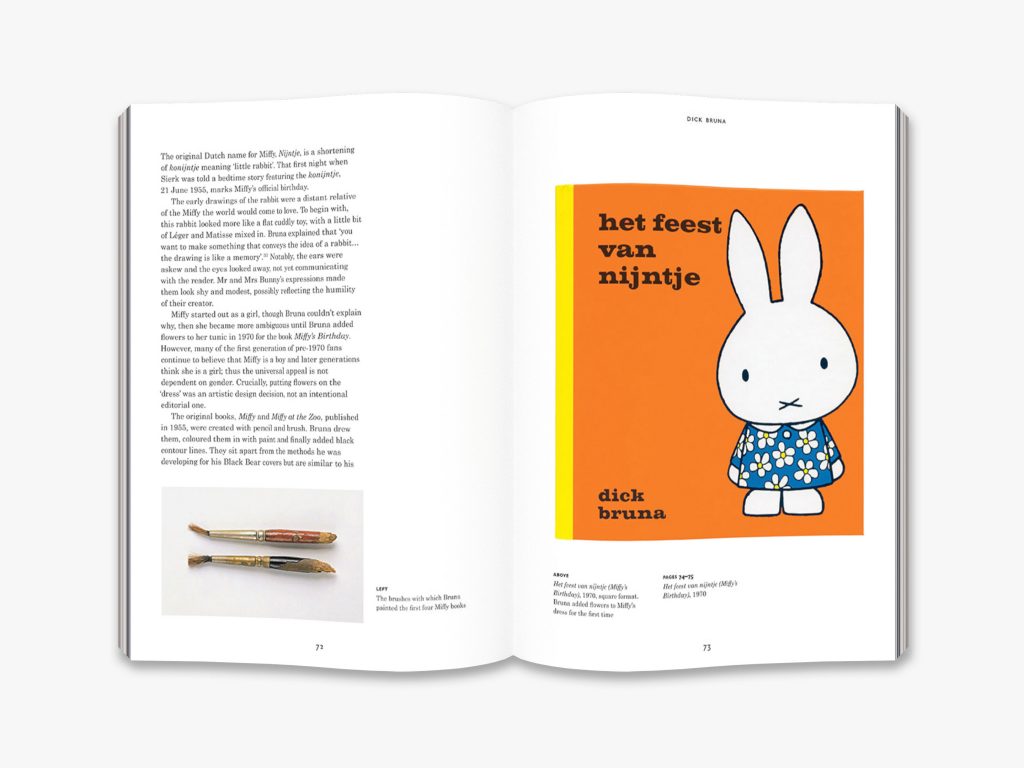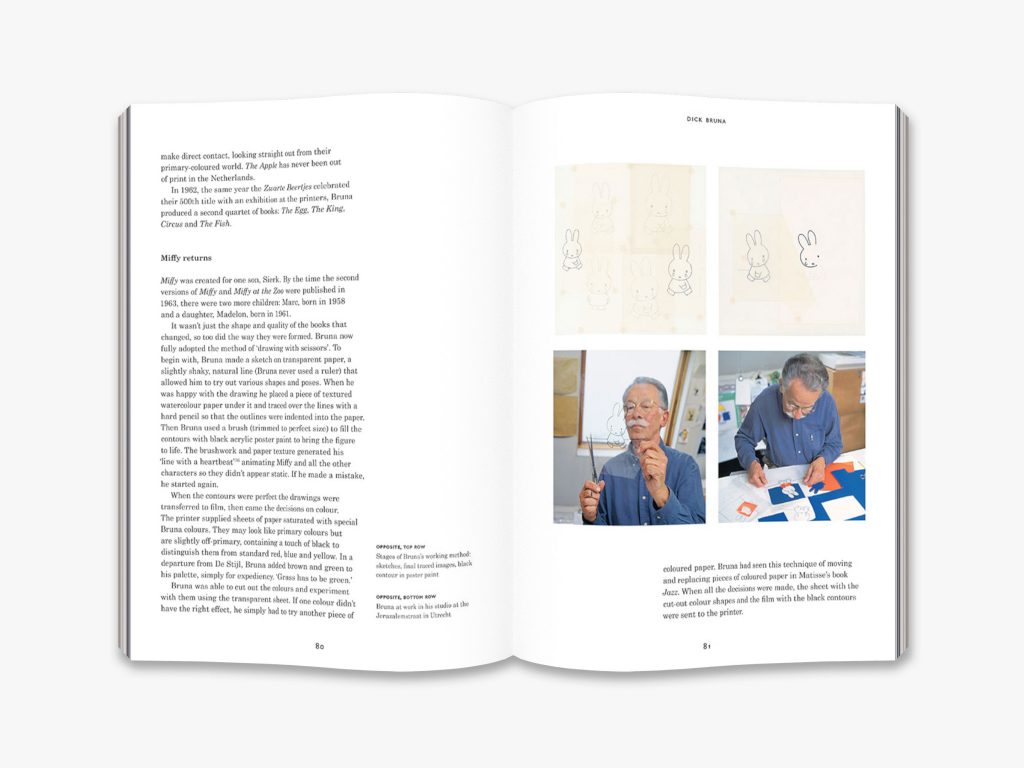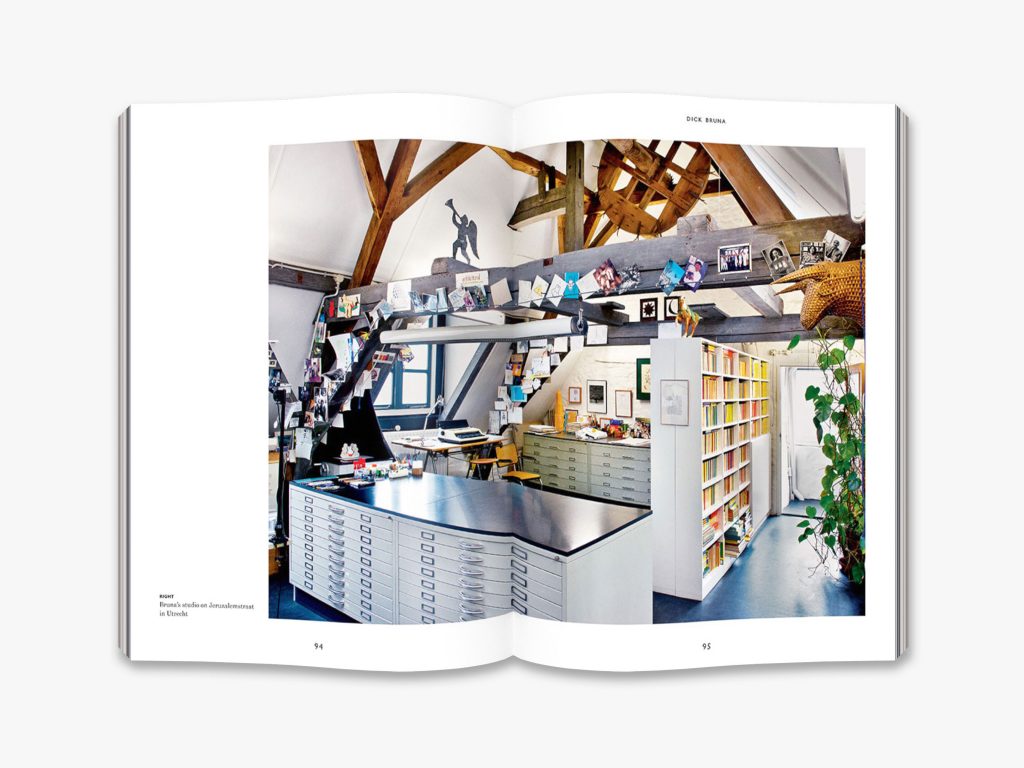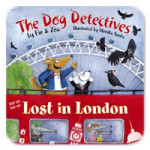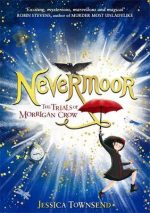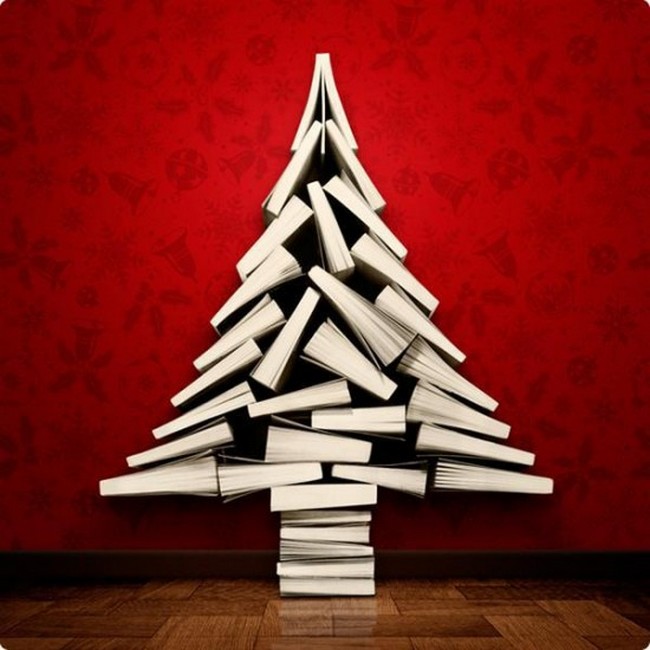Today, Miffy celebrates her 65th birthday.
Dick Bruna, his wife and their young son had been at seaside during a holiday when they witnessed a little rabbit (konijntje in Dutch) playing in the sand dunes. Later on, the little rabbit made its way into the bedtime story Bruna told his son. That day was 21st June 1955:
I have loved Bruna for many years. I don’t remember when I came across his work first, but I do know it was as an adult rather than as a child.
I meant him, once. In 2005 he came to London as part of Miffy’s 55th birthday celebrations and we decided to take a day trip to the big city, toddler and 3 month-old baby in tow, to see him. Sadly, I remember very little of the day (it was a rather fraught day) but I do remember how quiet and kind he was. As a fan of his work, I had also long wanted to visit the Netherlands and finally did so last summer, but still was not quite prepared for quite intrinsic Miffy and Bruna are to Dutch culture. Miffy is everywhere; every gift shop, tourist shop, bookshop. Between Miffy and Annie M.G. Schmidt and Fiep Wetendorp’s creations Jip & Janneke and Pluk, it’s obvious the Dutch take great pride in the role picture books play in their cultural heritage.
Part of this literary tourism trip was of course to visit Utrecht where Bruna lived most of his life and is home to Nijntje Museum ( a children’s museum dedicated to Miffy) and Atelier Dick Bruna, his relocated studio, at Centraal Museum.
Here is a quick video that gives you a better look of Atelier Dick Bruna:
Visiting Atelier Dick Bruna was an emotional experience. I just loved being immersed in his world for a little while. One thing that really disappointed me however is that while the gift shop seemed to have a huge selection of Miffy-themed paraphernalia, there was no book about its creator, and I was told none were available when I asked.
So you can imagine my delight, when Thames and Hudson announced late last year that the next volume in their fabulous The Illustrators series would be on none other than Dick Bruna.
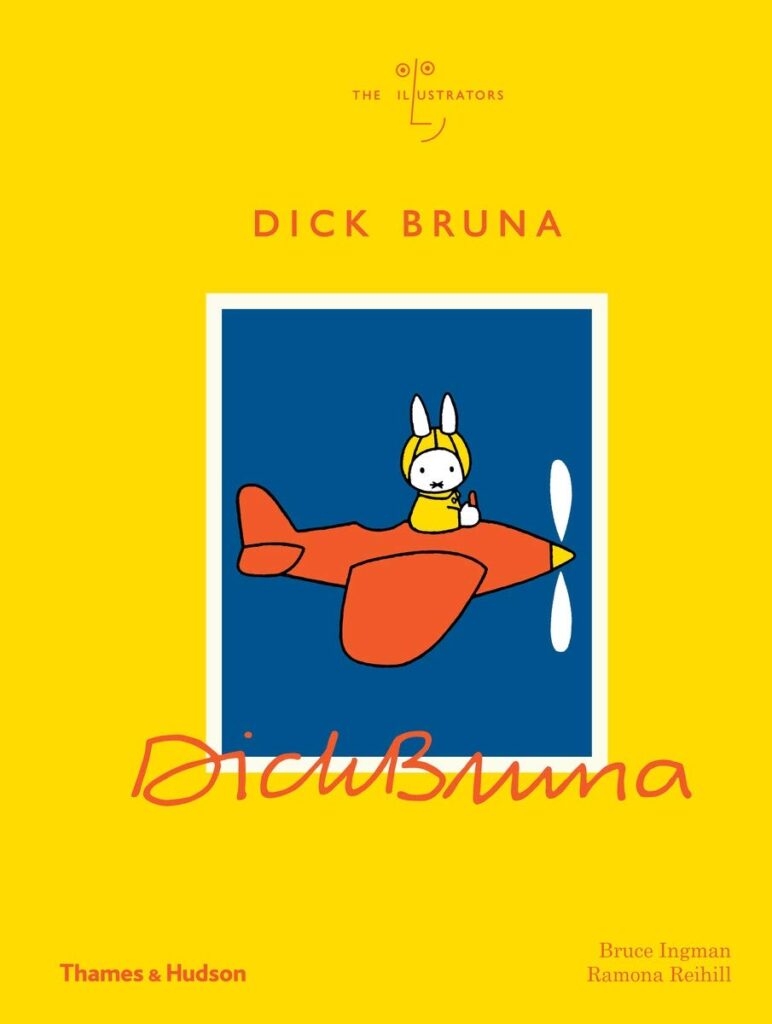
Written by Bruce Ingman and Ramona Reihill, The Illustrators: Dick Bruna brings a fascinating overview of Bruna’s life as well as his of body of work, and includes family photographs, letters, sketches and early artwork. It goes into great detail about Bruna’s inspiration (Matisse and Léger amongst others) and how they have impacted his work. Amongst those pages Bruna is not merely Miffy’s dad, but an accomplished artist, working with many different media, whose artistry cannot be defined just by his children’s books.
What I love about this series, and which shows particularly well in this tome, is that it is pitched for all illustration enthusiasts, not just art specialists, readers just like me (while I have abundant enthusiasm for picture books illustration, I have no formal art education and I am not an artist)! The text reads wonderfully, with an almost conversational tone which make it hard to put it down. Once I sat down and opened it, I read it all.
I just loved reading about Bruna’s work. I learnt so much, and was particularly fascinated by his book cover work on crime novels (Maigret, The Saint, O.S.S. 17 – probably as far removed from Miffy as one could imagine!) . There are many sticky tabs in my copy highlighting favourite quotes and other things I wanted to remember. I am not going to share them because I want you to discover it for yourself and leave you to find the quotes that resonate with you. What I can say is that the authors have expressed exactly how I feel about Bruna’s work and his ability to “convey so much in so little” (62) . It was for me, the perfect homage to an illustrator, and man, like no other.
I was delighted therefore when Ramona and Bruce agreed to answer a few questions about the process of putting the book together.
Thank you for agreeing to answer a few questions about The Illustrators: Dick Bruna. Could you tell us first how the project came about?
Bruce has been an Ambassador for House of Illustration from the outset and knew that Quentin Blake and Claudia Zeff were proposing The Illustrators series to Thames & Hudson.
In fact he was asked to supply a quote to help endorse their initial proposal for the series and at the time he expressed an interest in being involved and Claudia suggested he might want to take on the Dick Bruna one. As Ramona had worked for Heinemann/Methuen (Reed), later Egmont, and had experience of working on Miffy publishing with Mercis and with similar high-profile estates, taking on Bruna seemed particularly serendipitous and natural for her to become co-writer.
I was wondering whether you could tell us more about the process of research process; did you visit Utrecht? Did you get access to unseen archives? And how did you decide what would go in, and what was left out?
We went to Amsterdam to meet with Mercis (the Miffy/Bruna people) and spent several days with them discussing ideas, learning more about Bruna and going through their archive which was/is in the process of being digitised – put online. Some of the artwork had only recently been recovered from storage so there was quite a lot previously unseen; looking at the drawings he left for his wife every day was certainly a highlight, all of which she has kept. And just sitting in their beautiful office in the Museum District surrounded by samples of all the Miffy merchandise was inspiration in itself. We were taken to Utrecht for a tour of the town and to visit the Miffy Museum and Bruna’s studio in the Centraal Museum across the road. This gave us a sense of Bruna’s everyday life. The sight of his bicycle in the entrance to his studio was a particularly poignant lump-in-the-throat moment.
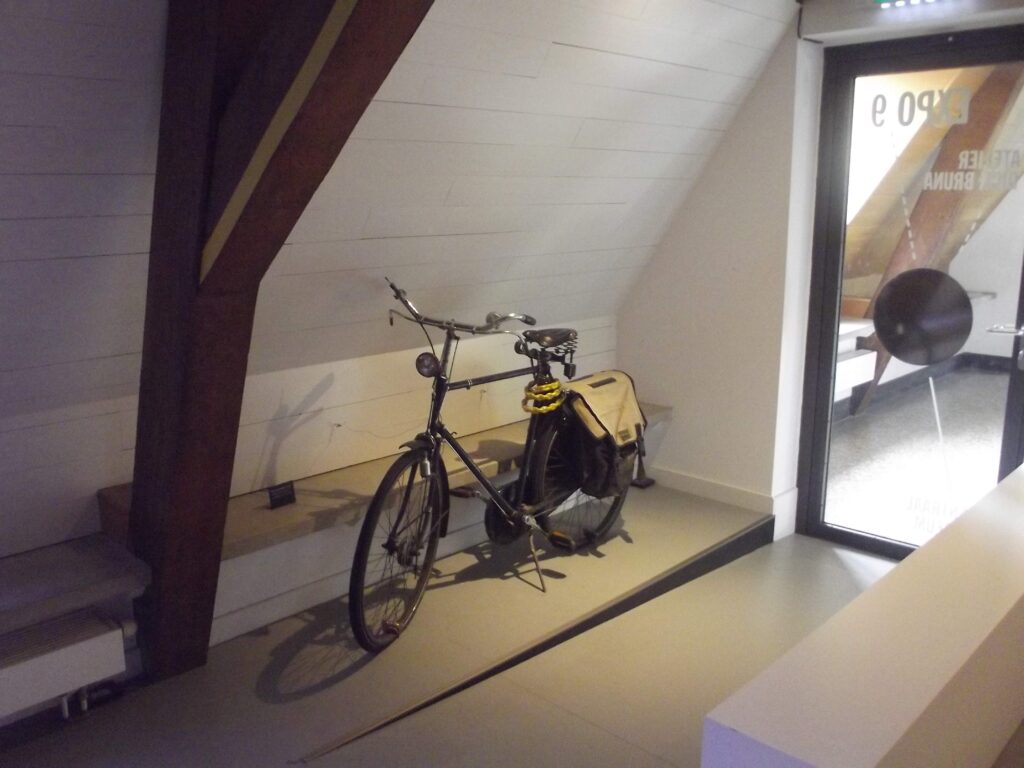
The trips to Amsterdam and Utrecht also confirmed, if we didn’t already know, just how omnipresent Bruna and Miffy are in the Netherlands; the artist and his creation are much-loved and of huge cultural significance.
The decision on what would go in the book was a combination of choice and availability as not everything we saw was photographed and archived for production use. We also had to take his wife Irene’s wishes into account though thankfully that was never an issue. On occasion, at the design stage, an image didn’t fit as well as expected or one didn’treproduce as successfully as hoped but there were always equally lovely alternatives and in the end it all came together.
Was it a conscious choice to shift the focus away from Miffy a little?
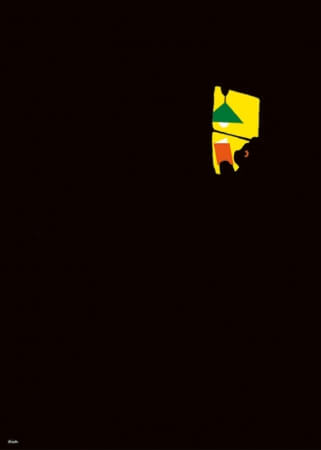
It was a conscious decision for a number of reasons: to fit the series brief, to give Dick Bruna the recognition he deserves beyond his most famous creation and to create a book for all Dick Bruna fans across the world from the UK to Japan and Korea with his homeland in between.
The Illustrators as a series is pitched at ‘the enthusiast’ not the expert. It covers the illustrator’s life and work with particular reference to their influences and inspiration. Dick Bruna seemed to fit into this particularly well so it was a dream project.
The Dutch edition cover another piece of artwork, is this due to him being recognised as more than simply Miffy’s dad there, unlike here?
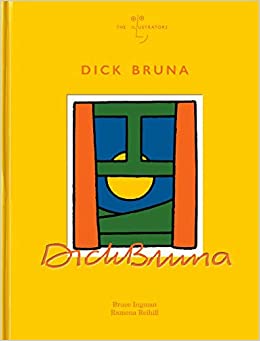
This links back to what we’ve said about our experience in the Netherlands. Bruna is a cultural icon there and the cover on their edition comes closer to reflecting his artistic status. A lot has been written about Bruna and Miffy but this needed to proclaim that it offered more than Miffy. Equally importantly, Bruna’s fame is such that his fans may well want to buy both UK and Dutch editions so it makes commercial sense that they would prefer to offer two covers.
Finally, if you could choose a favourite piece of artwork by Bruna, what would it be?
Ramona: This question may be too difficult for me. I love Miffy at the Gallery because it does seem to sum up Bruna, but seeing Miffy on a bicycle has a greater emotional impact now that I’ve seen his bicycle in real life. Similarly, the love conveyed in his simple but utterly devoted and delightful drawings for Irene makes it hard to choose a favourite.
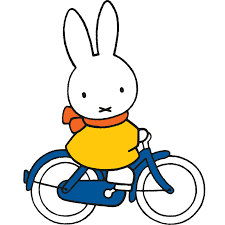
Bruce: I would probably choose the image on the cover. I just love it! It triggers perfectly the journey that Bruna and myself and Ramona went on.
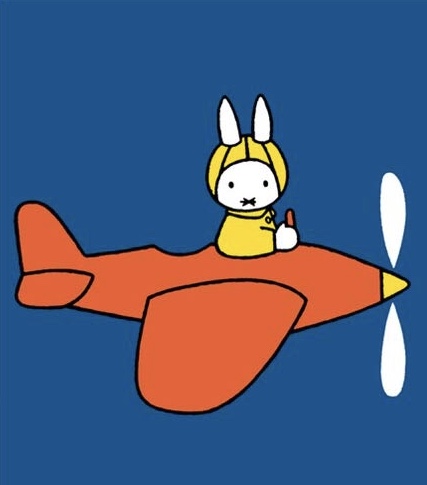
Thank you so much Ramona and Bruce for answering those few questions, and thank you so much for this beautiful book!
To finish off, I thought I would share this wonderful video which follows Bruna through each stage of creating Miffy, with the ultimate chansonnier, Charles Trénet, playing in the background (Bruna’s favourite musical genre):
*****
The Illustrators: Dick Bruna is published by Thames & Hudson and is out now. You can buy a copy here or in all good bookshops.

